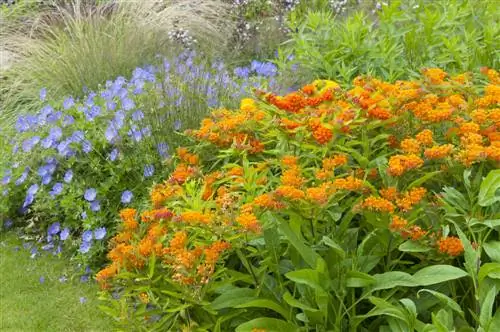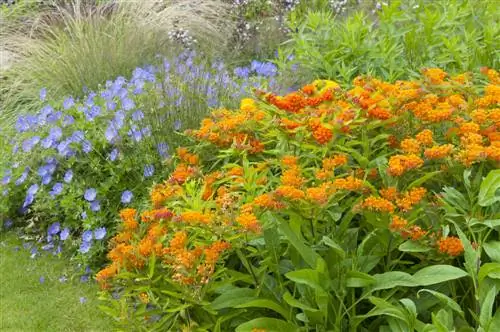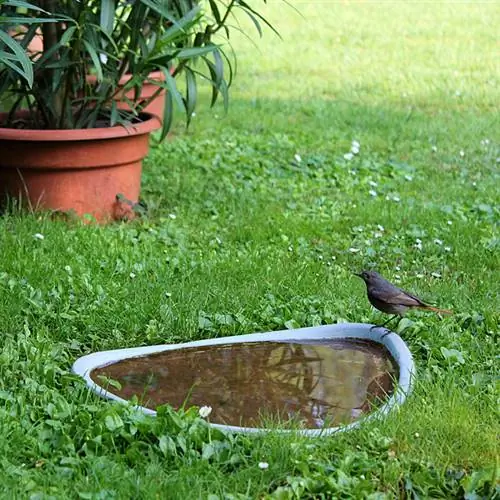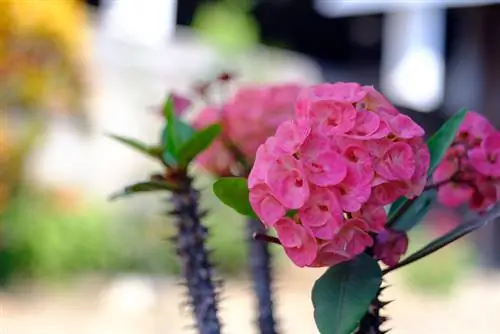- Author admin [email protected].
- Public 2023-12-16 16:46.
- Last modified 2025-01-23 11:21.
There are around 200 different species of Asclepias tuberosa, also known as milkweed. Not all varieties are really winter hardy, even if they are often offered that way in stores. It is therefore advisable to care for the plant in a pot so that it can overwinter frost-free.

Are all Asclepias tuberosa varieties hardy?
Not all Asclepias tuberosa are hardy: there are non-hardy, partially hardy and completely hardy varieties. Care varies depending on the variety: Non-hardy Asclepias should be kept frost-free in a pot over the winter, partially hardy ones require light winter protection, while winter-hardy varieties are best planted outdoors in a protected area.
Not all varieties of Asclepias tuberosa are hardy
When it comes to Asclepias tuberosa, experts differentiate between three species that have different winter hardiness. There is
- non-hardy varieties
- conditionally hardy varieties
- completely hardy varieties
So that you know how to care for your milkweed in winter, you should know the variety. This is not easy given the large number of species. In an emergency, ask a specialist.
Overwintering Asclepias tuberosa
The non-hardy varieties should be grown in pots so that they can be overwintered indoors in winter. They can only tolerate temperatures up to ten degrees.
Conditionally hardy Asclepias tuberosa can survive winter temperatures down to minus 10 degrees and can therefore be planted directly in the garden in protected locations. However, they should receive light winter protection.
Winter-hardy varieties can cope with even lower temperatures, but should be kept in a protected place.
Overwintering Asclepias tuberosa in a pot
Non-hardy Asclepias tuberosa must be placed in a place in winter where temperatures do not fall below 12 degrees. When it gets colder, the leaves fall off. The new growth is delayed and therefore the flowering in the coming year.
A bright location is important. Asclepias tuberosa is watered very sparingly in the pot in winter so that the root ball does not dry out completely. You are also not allowed to fertilize the silk flower during this time.
Care for milkweed outdoors
It is best to plant a hardy Asclepias tuberosa in a protected location where the soil is well drained.
In winter, the plant loses almost all of its leaves outdoors. To protect them from frost damage, you should cover the planting sites with leaves, brushwood or other suitable materials.
Tip
Winter-hardy Asclepias tuberosa, which you keep in the garden all year round, is best planted straight away with a root barrier. The silk flower forms many strong runners and otherwise spreads very quickly.






